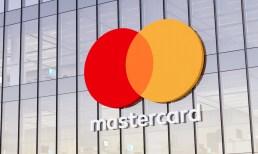The social media giant announced Monday (Oct. 30) that it is introducing paid monthly subscriptions to Facebook and Instagram in the European Union, the European Economic Area and Switzerland as data privacy regulations on the continent become more restrictive. The subscriptions range from 9.99 euros (about $11) a month to 12.99 euros (about $14) a month depending on the device. Meanwhile, those who do not purchase a subscription will continue to receive targeted ads.
The move comes as the social media company looks to find ways to maintain its revenue streams amid new regulations, enabling it to monetize this shift toward data privacy while continuing to sell ads for users who do not want to pay for, or cannot pay for, the commercial-free option.
While this adjustment may have been made in response to changing regulations, it comes as part of a broader industry-wide shift toward tiered membership options. X, formerly known as Twitter, announced Friday (Oct. 27) the rollout of three subscription levels for X Premium, Basic, Premium and Premium+, ranging from $3 to $16 a month (or $32 to $168 annually), depending on available features.
Meanwhile, TikTok is testing an ad-free monthly subscription plan as well. As a TikTok spokesperson told PYMNTS, this offering is being tested in one market outside the United States.
These moves toward subscription models come as social media companies look for new, more effective ways to monetize their followings, with social commerce proving not as popular as one might expect.
Advertisement: Scroll to Continue
According to the report “Tracking the Digital Payments Takeover: Monetizing Social Media Edition,” created by PYMNTS Intelligence in collaboration with Amazon Web Services (AWS), only 14% of consumers buy goods and services via social media.
The figure suggests under-penetration in social media commerce, considering that the same study showed that 43% of consumers browse social media to find goods and services — a figure that can contribute to strong sales to advertisers.
Yet, when it comes to purchasing, these users have their doubts. The findings revealed that the most common reason for not using social media to make purchases is consumers’ lack of trust in the sharing of their personal data.
In addition to driving revenue from its ad-free plans in Europe, Meta is also looking to consumers’ demand to build their social followings to create subscription commerce opportunities with its Meta Verified program, as Chief Financial Officer Susan Li discussed on the company’s third-quarter earnings call with analysts Wednesday (Oct. 25).
“[It’s] quite early here, but we’ve rolled out Meta Verified for creators to most markets globally,” Li said. “We continue to hear positive feedback from creators as we’ve helped them more easily establish their presence on Facebook and Instagram. We also have recently begun testing Meta Verified for businesses on Facebook and Instagram in select countries, and we have plans to expand that to businesses on WhatsApp in the future.”




